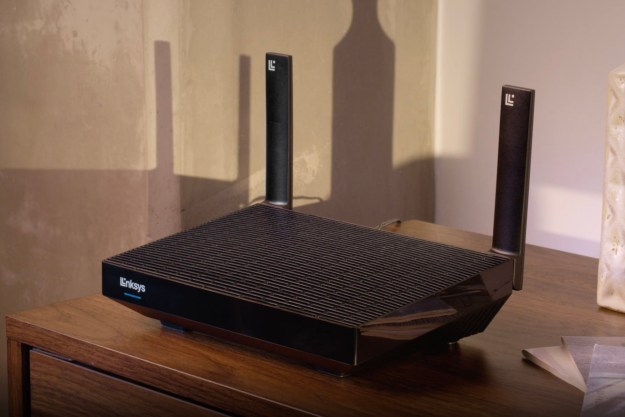
Following the announcement of the Nighthawk Tri-band AX12 router in March, Netgear is expanding on its lineup and is launching yet another new Wi-Fi 6 router. Available later in April, the Nighthawk AX4 router sets out to bring Wi-Fi 6 speeds for all the demanding needs of consumers, but for an affordable price of $200.
Under the hood of this new four-stream AX3000 Wi-Fi router is a dual-core processor with a small-packet handler. It also features a 16-client orthogonal frequency-division multiple access (OFDMA) to allow simultaneous connections for multiple Internet of Things (IoT) devices without sacrificing internet speeds. Other features on the new router include a high-power design, which allows for better coverage and performance when used in homes and offices. It even delivers support for Gigabit Wi-Fi on compatible mobile devices.
Similar to Netgear’s other Wi-Fi 6 routers, the Nighthawk AX4 is wall mountable and integrates with Nighthawk app, which allows users to easily set up, control, and monitor a home network. Netgear says the new router offers up interference-free channels with its support for dynamic free selection (DFS.)
Currently, there is a wide selection of new Wi-Fi 6 routers available through Netgear. At $200, the most affordable is the Nighthawk AX4. One step up from that — and priced at $400 — is the Nighthawk AX8, which brings high-performance 8-stream Wi-Fi to smart homes. At the very top is the 12-Stream Nighthawk Tri-band AX12, which comes in at $600.
Options available from outside Netgear include the Asus RT-AX88U, Asus ROG Rapture GT-AX11000, and the D-Link AX6000. Several Wi-Fi 6 gaming routers are available as well, including the TP-Link AX11000.
As we’ve previously explained, the Wi-Fi 6 standard brings low latency and shorter delay times as internet data is sent across the network. Without upgrading the internet speed, Wi-Fi 6 also supports MU-MIMO technology, which is able to make networks more efficient.
Importantly, battery life can also be improved on Wi-Fi-6-compatible devices. The list of supported devices is still short. It includes the Galaxy S10, and newer Lenovo ThinkPad models. However, as more Wi-Fi 6 routers are released, you can expect to see more device makers to come on board with the new technology.
Editors' Recommendations
- How to change your router’s Wi-Fi password
- Google Nest Wi-Fi Pro adds Wi-Fi 6E but loses compatibility
- This dongle can bring a superfast Wi-Fi 6 connection to your old computer
- Wi-Fi 7 officially hits 5Gbps, five times the speed of your current router
- Intel could give us Wi-Fi 7 devices long before Apple gets around to it

